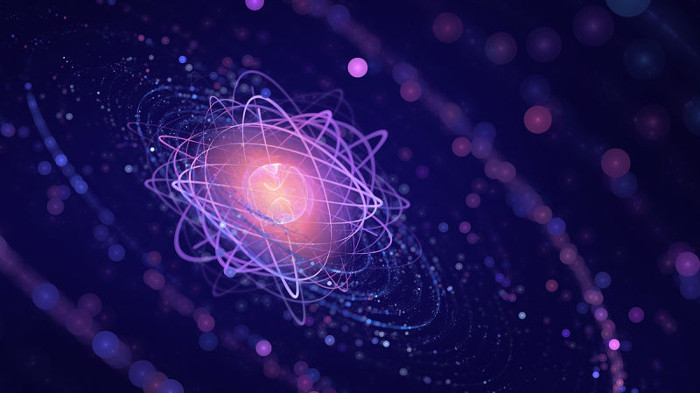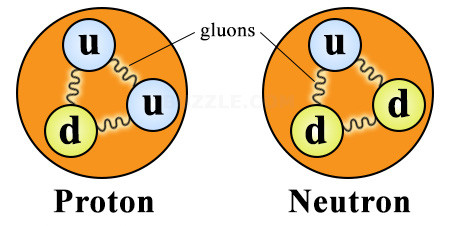A theory being tested can cause textbooks to be rewritten
It is considered a "blasphemy" to the theory of modern nuclear physics, similar to how Galileo Galilei challenged the Roman Catholic church with heliocentric theory in the 17th century.
A group of physicists from the United States, Japan and Australia have proposed an experiment to prove: the proton structure can change within the atomic nucleus, under certain conditions.
What does that mean? It is considered a "blasphemy" to modern nuclear theory, similar to the way Galileo Galilei challenged the Roman Catholic church with heliocentric theory in the 17th century. will have to be rewritten.

Physical textbooks from high school to college are at risk of being rewritten.
"For many scientists, the idea that protons inside the nucleus can change under certain conditions seems ridiculous, even considered an insult , " said Professor Anthony Thomas, one of the Researcher from the University of Adelaide, Australia said.
"However, for some others like me, the evidence of this change is expected. It will help explain some of the conflicts that exist in theoretical physics."
So, what if it was true that the proton could change itself in an atom? It will not make the world collapse or affect the daily lives of most of us. But for nuclear physics and theoretical physics, it is considered a true "cataclysm" . To understand why, turn back your textbook pages.

Our current understanding of protons.
Proton was once one of the smallest particles, until we knew it was made up of three quarks bound by gluons. Our understanding of protons in today's nucleus is how we observe it in a free state, not bound by nuclei and electrons.
But this "truth" is not entirely consistent with quantum dynamics theory, which describes the interaction between quarks and gluons. On that basis, protons in the atomic nucleus can completely change under certain energy levels.
To make it easier to imagine, you can imagine protons being a piece of apple. We see it outside the blender (acting as the atomic nucleus), it's an intact piece of apple. The current theory says that a piece of apple in a blender will be as intact. However, new experiments are proposed to prove it can change.

A model in new research.
In the past, by the limit of theoretical technology the change of protons in atoms has never been verified. Until the most advanced equipment was installed at the Thomas Jefferson National Accelerator Facility, USA, Thomas and his team had just proposed the first experiment to prove this.
" By firing an electron beam at the atomic nucleus , you can measure the difference in the energy of the ejected electrons, indicating the changed state , " Thomas said. "We are having pretty sure predictions about the results of this experiment, hoping the measurements will fix it."
To prepare for the first experiment, Thomas and his team published their prediction in Physical Review Letters early last week. You can also download this research here. Perhaps right now, experimentation is in the process of being progressed.
It can be seen that this is a very meaningful experiment, even if the predictions of Thomas and colleagues do not match the measurement results. It is a clear testament to the hard work of science, so as not to miss any corner of our understanding of nature.
If the theory is proved, that true proton can change in the nucleus , it will create a shock for physicists. Perhaps, it will take years for them to refine their theory. Textbooks from high schools to universities around the world must also be rewritten.
- Japan will use digital textbooks in the classroom
- Many American schools will recognize monsters
- Detecting the 6th layer in the human eye
- Newton's second law is tested correctly
- The paper can be rewritten several times
- What is chaos theory?
- Why does the new cosmic theory make Stephen Hawking angry?
- 2015: students go to school without books
- Harmless thought, but some conspiracy theories can be deadly
- 6 wrong 'truths' in high school textbooks
- February 12: Charles Darwin - Theory of evolution and natural selection
- Stephen Hawking has just signed a letter to protect the doctrine of the origin of the universe
 Van Allen's belt and evidence that the Apollo 11 mission to the Moon was myth
Van Allen's belt and evidence that the Apollo 11 mission to the Moon was myth The levels of civilization in the universe (Kardashev scale)
The levels of civilization in the universe (Kardashev scale) Today Mars, the sun and the Earth are aligned
Today Mars, the sun and the Earth are aligned The Amazon owner announced a secret plan to build a space base for thousands of people
The Amazon owner announced a secret plan to build a space base for thousands of people